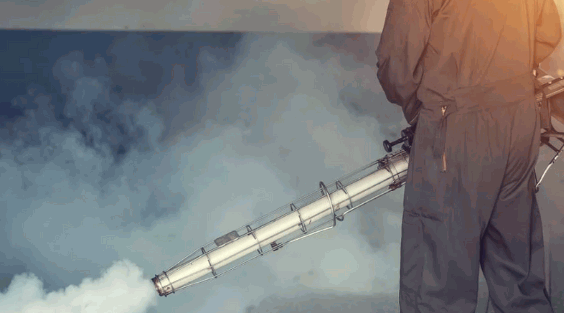
Fogging is a popular method used for pest control, disinfection, odor control, and mold remediation.
We will explore the different types of fogging, its benefits, applications, safety considerations, and how to perform fogging effectively.
Whether you are dealing with harmful bacteria, unpleasant odors, or mold growth, fogging could be the solution you are looking for.
Stay tuned to learn all about this versatile technique and how to use it safely and effectively.
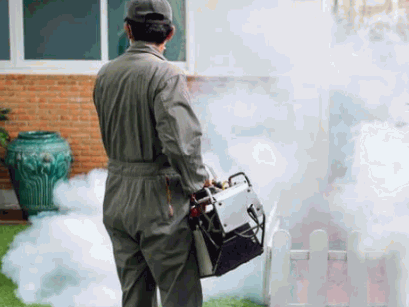
Table of Contents
Fogging is a specialised cleaning technique that involves using fogging machines to disperse a fine mist of disinfectant solution in the air and on surfaces.
By generating a cloud of tiny droplets that float and settle evenly across all areas, fogging can reach hidden nooks and crannies that traditional cleaning methods might miss. This thorough application of disinfectant mist effectively eliminates harmful bacteria, viruses, and pathogens that could be lurking in hard-to-reach places.
The mist produced by the fogging machine is not only efficient in sanitising surfaces but also quick to dry, making it a time-saving and effective solution for large-scale sanitation needs. This method ensures that not a single spot is left untouched, providing a comprehensive and deep cleaning process that is ideal for healthcare facilities, schools, offices, and other high-traffic areas.
Check out: How To Clean Fireplace Brick
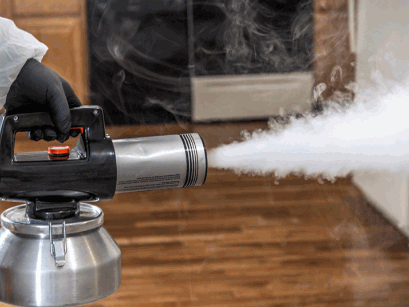
Fogging works by using specialised fogging machines operated by trained cleaning specialists to generate a fine mist of disinfectant that effectively reaches and covers surfaces and airborne pathogens.
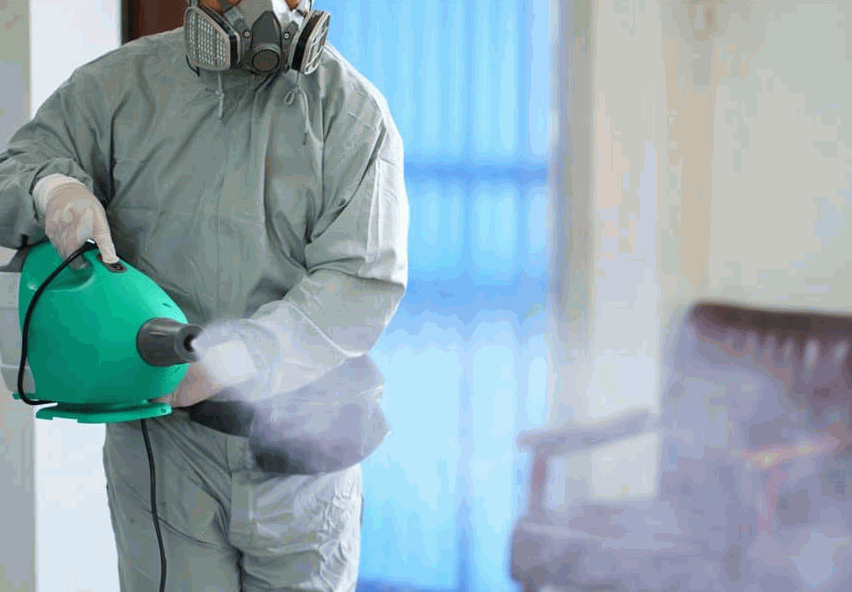
Fogging techniques encompass various types, including thermal fogging, cold fogging, and ULV fogging, each with distinct methods of dispersing disinfectant.
Thermal fogging involves using heat to vaporise a chemical solution into a fog or smoke that penetrates and disinfects hard-to-reach areas, but it may involve the use of hazardous chemicals.
During the process, a specialised thermal fogging machine heats the solution until it reaches a high temperature, transforming it into tiny particles that disperse into the air.
The heat plays a crucial role in creating a thermal fog that can effectively reach hidden spaces, such as cracks and crevices, where traditional cleaning methods might not be as efficient.
Precautions must be taken when handling the chemicals used in thermal fogging, as some substances can be harmful if not managed properly.
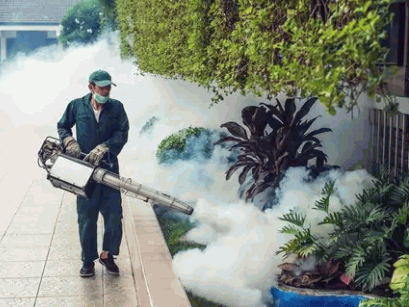
Cold fogging utilises misting devices to disperse a disinfectant mist at room temperature, effectively covering surfaces and providing thorough disinfection.
This innovative method is especially effective in reaching inaccessible areas that traditional cleaning methods may overlook. The misting devices used in cold fogging are designed to produce fine droplets of the disinfectant solution, ensuring even distribution and minimal wastage. The fog, consisting of tiny particles, lingers in the air, effectively disinfecting not just surfaces but also the surrounding environment. This process is particularly beneficial in high-traffic areas or places where stringent hygiene standards are essential.
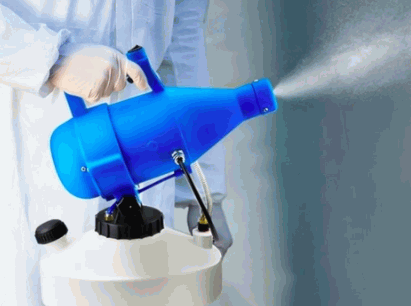
These fine droplets, due to their small size, linger in the air for an extended period, reaching inaccessible areas that traditional cleaning methods might miss. The combination of fine particles and the disinfectant solution ensures that surfaces are thoroughly coated, effectively eliminating harmful pathogens and viruses.
ULV fogging is commonly used in various settings such as hospitals, schools, offices, and public transportation to create a highly sanitised environment. The process is quick, convenient, and provides a powerful defense against germs and infections.
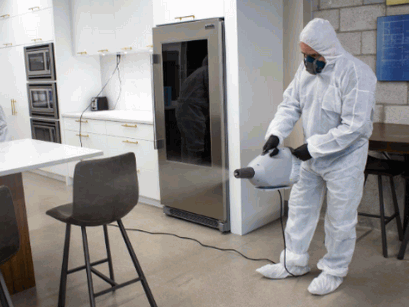
Fogging offers numerous benefits such as killing harmful bacteria and viruses, reducing allergens, and providing efficient disinfection through the use of disinfectant fogging techniques.
Fogging is effective in killing harmful bacteria and viruses, including prevalent pathogens like Covid-19, ensuring a sanitised environment.
By utilising fogging techniques, the misting solution can reach areas that are difficult to clean using traditional methods, effectively eliminating germs and viruses that may be lurking in these hidden spaces. The fine particles produced during the process are able to penetrate hard-to-reach corners, providing comprehensive disinfection. This method not only kills existing bacteria and viruses but also acts as a preventive measure against potential infections.
One of the key benefits of fogging is its capability to eliminate unpleasant odours by using specialised cleaning solutions like Total Defence, ensuring a fresh and clean environment.
By dispersing a fine mist of the cleaning solution, fogging can reach hidden corners and areas that traditional cleaning methods might miss, effectively neutralising odours at their source.
The Total Defence solution contains powerful ingredients specifically designed to combat tough odours, leaving behind a pleasant fragrance and a sanitised space.
Through the process of fogging, the Total Defence solution can penetrate porous surfaces, upholstery, and fabrics, thereby providing a comprehensive odour elimination approach.
Fogging plays a crucial role in preventing mould and mildew growth by using environmentally friendly cleaning products, ensuring a hygienic and mould-free space.
By utilising eco-friendly cleaning agents, fogging not only eliminates existing mould and mildew but also creates a protective barrier that deters future growth.
Unlike harsh chemicals that can be harmful to both health and the environment, these green cleaning products offer a safe and sustainable approach to remediation.
Fogging aids in reducing allergens that can trigger respiratory infections by improving air quality and creating a healthier environment for occupants.
The process of fogging involves using specialised equipment to disperse antibacterial solutions into the air, targeting common areas where allergens and pathogens thrive. These solutions can effectively neutralise and kill bacteria, viruses, and mould spores present in the air, significantly reducing the risk of respiratory infections. By eliminating these harmful microorganisms, fogging plays a crucial role in improving indoor air purity and ensuring the well-being of individuals, especially those with respiratory conditions.
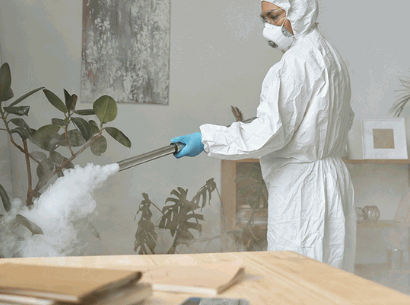
Fogging finds diverse applications including:
Fogging is commonly employed for pest control purposes, utilising safe disinfection methods and necessary safety precautions to eliminate pests effectively.
In agricultural settings, fogging machines are often used to disperse insecticides and repellents over a large area, reaching areas that are difficult to access using other methods. This method is particularly effective for controlling mosquitoes and other flying insects in outdoor spaces. It is crucial to ensure that the chemicals used in fogging are approved for use in the intended environment and that they are applied in accordance with recommended concentrations to avoid any harm to humans, animals, or the environment.
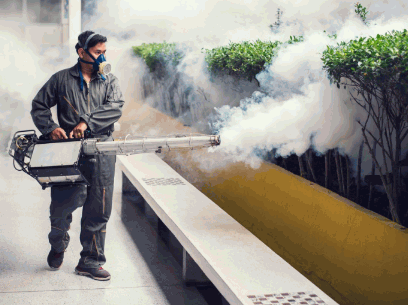
Fogging plays a vital role in disinfection and sanitisation processes by utilising techniques like disinfectant fogging and mist to ensure thorough cleaning by skilled cleaning specialists.
Disinfectant fogging is a process where a cleaning solution is converted into tiny droplets and dispersed as a fog or mist. This method allows the disinfectant to reach all surfaces, including hard-to-reach areas like crevices and corners, ensuring comprehensive coverage. Skilled cleaning specialists are trained to handle the fogging equipment efficiently, adjusting the settings to create an optimal fog density for effective disinfection.
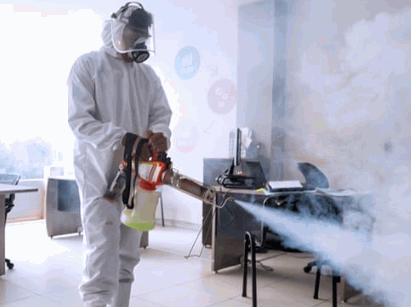
Fogging is effective in odour control through the use of mist sprayers that aid in decontamination, ensuring a fresh and pleasant environment.
When mist sprayers disperse the fine mist of sanitising solution, the tiny droplets effectively reach areas that are difficult to access through traditional cleaning methods. This method not only helps in eliminating odours but also targets and kills harmful bacteria, viruses, and fungi that may be present in the air or on surfaces.
Fogging is particularly beneficial in enclosed spaces where odours tend to linger, such as gyms, offices, and healthcare facilities. By neutralising unpleasant smells at the source, mist sprayers play a crucial role in maintaining a hygienic and inviting atmosphere.
Fogging is instrumental in mould and mildew remediation by using effective disinfectant solutions and promoting proper air circulation to prevent the growth of mould and mildew.
By dispersing specialised disinfectants through the air in a fine mist, fogging reaches into crevices and surfaces that are difficult to access, effectively eliminating mould spores and mildew. The process not only kills existing mould but also prevents future growth, providing a comprehensive solution for mould remediation.
The importance of air circulation in mould prevention cannot be overstated. Proper airflow helps in reducing moisture levels, which are essential for mould and mildew to thrive. It also aids in drying out damp areas and preventing stagnant conditions that promote mould growth.
When carried out following safety precautions and using chemical-free alternatives, fogging is a safe and effective method for disinfection and sanitisation in various settings.
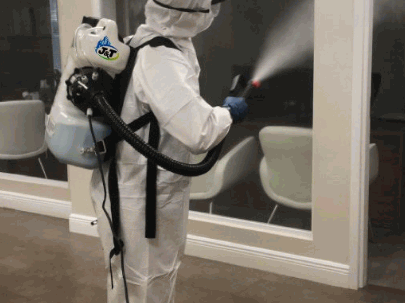
Fogging poses no significant risks to human health when using safe cleaning solutions, contributing positively to physical and mental well-being by creating a clean environment.
In a world where cleanliness is not just a luxury but a necessity, fogging emerges as a crucial tool in maintaining hygiene standards. The utilisation of safe cleaning solutions helps in eradicating harmful pathogens and bacteria that can compromise one's health. By creating a sanitised space with minimal health risks, fogging plays a vital role in safeguarding individuals against illnesses and infections.
Fogging can be safe for pets when done correctly, as it helps eliminate pathogens and improve air quality, creating a healthier living environment for pets.
When vaporised into tiny particles, the fogging solution can efficiently reach all surfaces, including pet bedding, carpets, and furniture, where pathogens may hide. This method is particularly effective in destroying harmful microorganisms such as bacteria and viruses that could pose health risks to pets.
Fogging can also neutralise unpleasant odours, leaving the air fresh and clean, which is especially beneficial for pets with sensitive respiratory systems. It's important, however, to ensure that pets are safely removed from the treated area until the fog has settled and the environment is deemed safe for their return.
Performing fogging requires meticulous preparation, adherence to safety measures, and the use of appropriate disinfectant solutions by trained professionals to ensure effective and thorough cleaning.
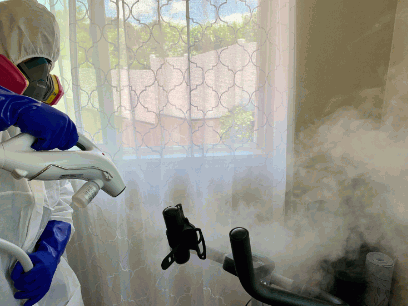
Before fogging, thorough preparation and adherence to safety measures are essential to prevent any risks, including handling disinfectant droplets and selecting appropriate fog machine solutions.
Preparatory steps involve ensuring the area to be fogged is clear of any objects or people, covering sensitive equipment, and sealing off vents. It is crucial to wear appropriate personal protective equipment such as gloves, goggles, and a mask to shield against potential exposure to chemicals.
Proper handling of disinfectant solutions is key; always dilute them according to manufacturer instructions, store them securely, and never mix different chemicals. The choice of fog machine solution depends on factors like the size of the area, the type of surface, and the specific pathogen targeted.
Selecting the correct fogging solution and machine is crucial for achieving effective disinfection, especially for airborne surface disinfection to target pathogens and maintain cleanliness.
Opting for the appropriate fogging solution can make a significant difference in the spread of germs and bacteria in enclosed spaces. The choice of disinfectant can impact the effectiveness of the entire process, ensuring that harmful pathogens are effectively neutralised.
Similarly, selecting the right fogging machine is equally important as it determines the dispersal pattern and coverage area, leading to thorough disinfection. By understanding the specific needs of the environment, one can tailor the fogging solution and machine to optimise results and promote a healthier space.
Operating the fogging machine involves understanding its functions, including the use of electrostatic machinery to disperse disinfectant mist, while taking precautions to avoid exposure to hazardous chemicals.
Electrostatic fogging machines operate by charging the disinfectant particles as they are sprayed, creating a positively charged mist that envelops and adheres to surfaces in a more efficient manner.
These machines help in achieving more thorough coverage, reaching even hard-to-access areas that traditional cleaning methods might miss.
It is crucial to follow safety guidelines and wear appropriate protective gear, such as masks and gloves when handling potentially harmful chemicals.
Taking precautions when using fogging techniques includes wearing protective gear, ensuring proper ventilation after fogging, and keeping children and pets away from the treated area for safety.
Wearing appropriate protective gear, such as masks and gloves, is essential when using fogging methods to prevent exposure to airborne pathogens and ensure the safe application of disinfection.
Protective gear acts as a barrier, shielding the individual from inhaling harmful substances present in the fogging solution, containing chemical disinfectants. By covering exposed skin, it also minimises direct contact with the chemicals, reducing the risk of skin irritation or allergies. Wearing gear like goggles or face shields safeguards the eyes against potential irritation.
The proper disposal of used protective gear following fogging operations is crucial to prevent contamination and maintain a clean working environment. Utilising disposable protective equipment also enhances convenience and hygiene in the disinfection process.
Properly ventilating the treated area after fogging is crucial to enhance air circulation, improve air quality, and dissipate any lingering disinfectant remnants for a healthy environment.
Facilitating post-fogging ventilation allows for the dispersion of any remaining disinfectant particles, ensuring that the indoor air quality reaches optimal levels. Effective air circulation plays a vital role in diluting and neutralising chemical residues, preventing any potential health hazards associated with prolonged exposure. Promoting continuous airflow aids in reducing humidity levels, which in turn inhibits mold and mildew growth, contributing to a safer and more comfortable living or working space.
To ensure safety, it is vital to keep children and pets away from fogged areas immediately after treatment, as the disinfectant mist may pose risks to their health.
Exposure to the chemicals in the disinfectant mist can lead to respiratory irritation, skin reactions, and potential long-term health effects for your little ones and furry friends.
Proper ventilation and waiting time are crucial before allowing them back into treated spaces. Ensure any toys, food/water bowls, or bedding that may have been exposed are thoroughly cleaned or removed to prevent ingestion or contact. Being cautious and following these safety precautions is essential in safeguarding their well-being post-fogging treatments.